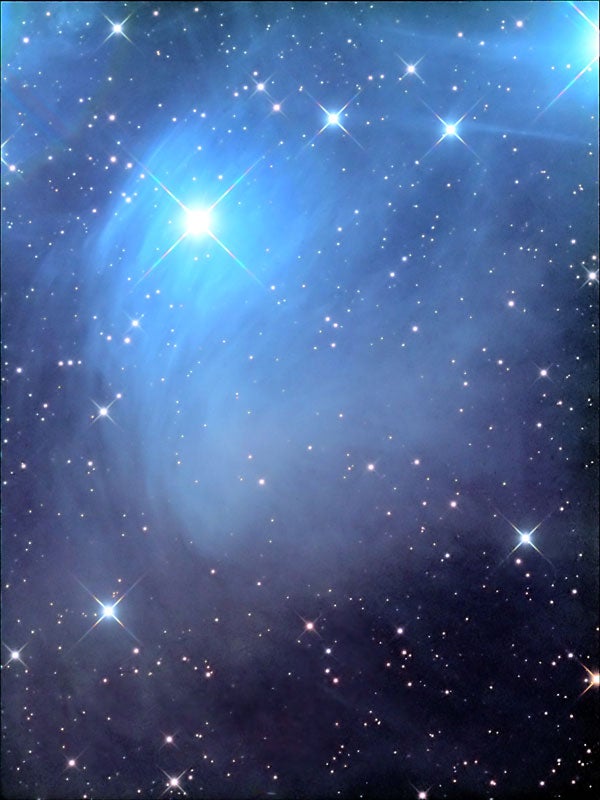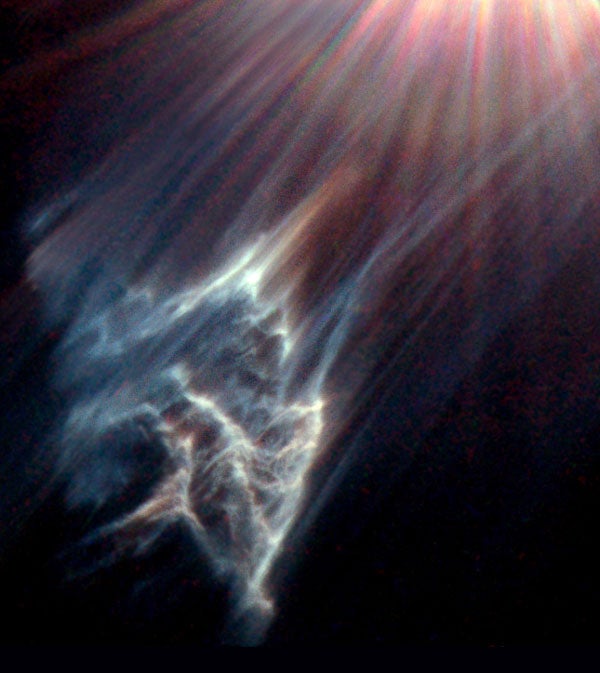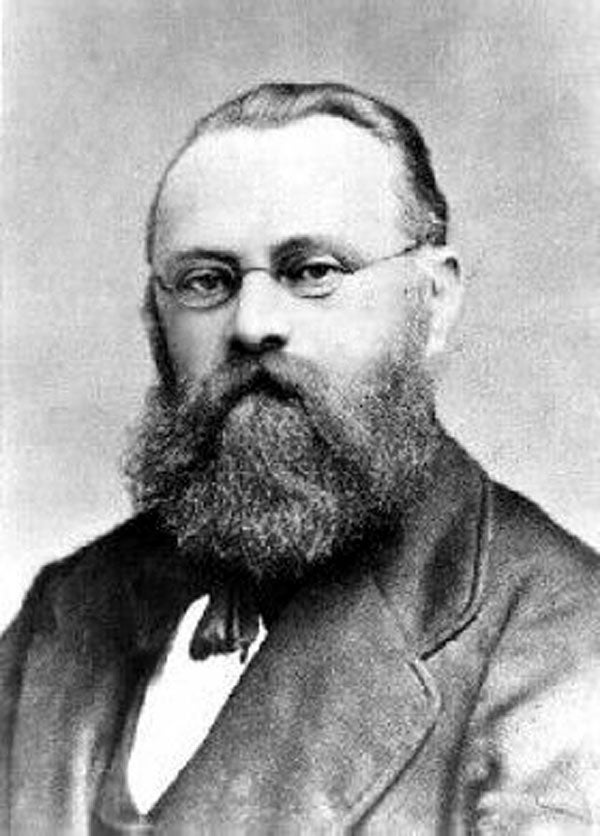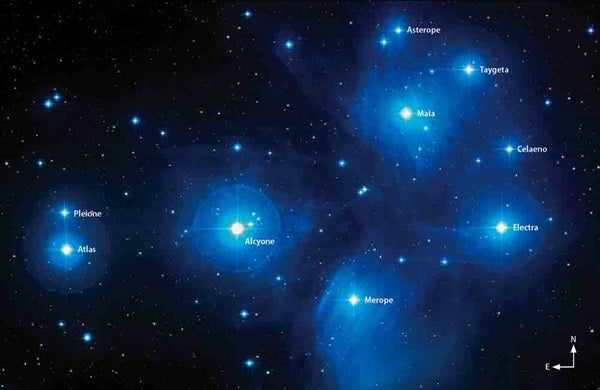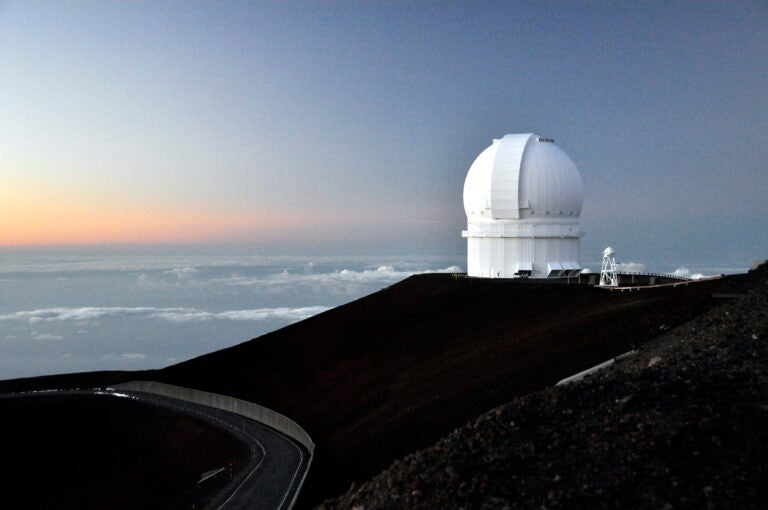Telescopic observers learned these facts over a period of decades in the middle to late 19th century as some of the most reputable astronomers of the time debated the existence of the brightest veil: NGC 1435, otherwise known as Tempel’s Nebula and the Merope Nebula (because of its proximity to the star Merope). The story behind the astronomical quest to spy that and other nebulosity in the Pleiades (M45) is much too complex to review here in detail. Instead, I will highlight some of the more interesting asides — ones that help illustrate how difficult it can be to verify visual claims. These historical fragments should also help you put your own observing experience into perspective.
The “mystic” veil
While in Venice, Italy, German-born Wilhelm Tempel turned his 4-inch Steinheil comet-seeker toward the Pleiades on October 19, 1859. He hadn’t looked at the group in 6 months, he said, and consequently found a “large bright nebula,” about 30′ in length, just south of Merope. Except for an uncertain observation by French astronomer Edme-Sébastien Jeaurat in 1786, Tempel’s was the first well-documented sighting of nebulosity in the Seven Sisters.
Not so fast
Skepticism arose, however, when several renowned observers using large refractors and reflectors could not see the nebula. German astronomer Heinrich d’Arrest was among Tempel’s biggest critics. After failing to detect the veil through his 11-inch refractor in Copenhagen, d’Arrest jousted, “I have hitherto been able positively to see nothing. … I therefore, even yet, am of opinion that this nebula is variable, otherwise the original announcement of the discovery … must be looked upon as being greatly exaggerated.”
Others, including fellow German Eduard Schönfeld, disagreed. Observing September 20, 1862, with a 6.5-inch refractor in Mannheim, Germany, he said the nebula “instantly stuck out in the local telescope.” Later, he added that it had shone “very clearly” and was “immediately conspicuous, without accurate knowledge of the position.”
In his “Great Nebula in the Pleiades,” in an 1888 issue of Knowledge, noted English astronomer Arthur Cowper Ranyard opined, “The observations are worth examining, as they throw some light on the differences which are always likely to exist when observations are pushed into the border-land of vision, where by reason of the extreme faintness or minuteness of the objects examined, the eye begins to fail, and the imagination begins to play a larger and larger part in filling up the gaps where the senses of the eye-straining observer fail him.”
Because we now know that the Merope Nebula does not vary in brightness, the reason for the diverse opinions among these respected observers is clear: Large, dim nebulae can escape notice (due to lack of contrast) in a long-focal-length telescope at high power, which gives a limited field of view.
The nebula grows
As observers began scrutinizing the Merope Nebula, new details emerged. In 1864, German-born French artist and astronomer Hermann Goldschmidt thought the entire cluster was surrounded by nebulous matter, extending over an area of 5°. Others agreed in general that Tempel’s nebula was larger than listed.
Italian astronomer Giovanni Schiaparelli, for instance, wrote to Tempel, asserting, “Not only does [the Merope Nebula] reach almost up to Electra, but it encompasses that star and Celaeno as well. … It is singular that so many persons should have examined the Pleiades without paying attention to this great nebula, which nevertheless is so evident an object with a clear sky.”
Clarity began to take shape in 1886 with photographs by French brothers Paul and Prosper Henry taken through the 13-inch refractor at Paris Observatory. They showed for the first time not only the Merope Nebula (as four nearly parallel streaks) but also wisps of nebulosity extending from the stars Maia and Electra.
Inspired by the photographic evidence, new visual studies ensued. One observer, Austrian astronomer Rudolf Spitaler, used the 27-inch Grubb refractor in Vienna to see some astounding detail: “At least the whole Pleiades region west and north of Alcyone is covered by an extended nebulosity, of which all previously perceived, apparently isolated nebulae are merely bright knots of light.”
This observation, in turn, was vindicated in October 1886 when Welsh engineer and amateur astronomer Isaac Roberts made a 3-hour exposure with the 20-inch Grubb reflector. It showed not only Alcyone, Maia, Electra, and Merope “surrounded by nebulae, but that the nebulosity extends in streamers and fleecy masses, till it seems to almost fill the spaces between the stars, and to extend far beyond them.”
The only visual detail that went unnoticed in the photographs was IC 349, which eagle-eyed Edward Emerson Barnard spied in 1890 through the 36-inch refractor at Lick Observatory in San Jose, California. He called it the “new Merope nebula” because the 30”-wide cometary glow (the brightest part of the nebula) lies only 36” southeast of Merope and thus hides in the star’s glare. Alas, even this discovery has seen challenges. But that’s another story.
Now it’s your turn. Let me know what you see at someara@interpac.net.


